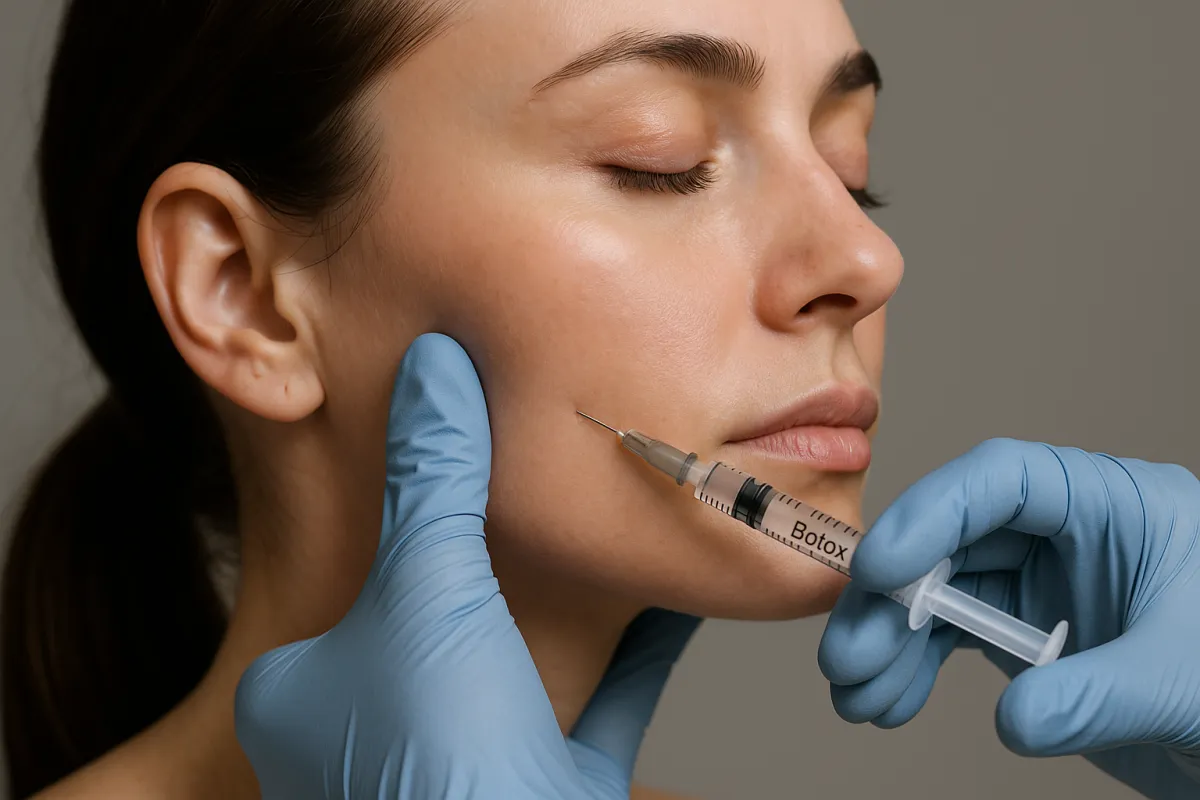
Is Botox Really Effective in Managing TMJ Disorders?
“Botox can offer short-term muscle relaxation and pain relief for select patients; but these effects are temporary and unpredictable. In the best-designed studies, Botox performs no better than saline placebo".
From dentists’ websites to Reddit TMD forums, Botox injections have been touted as a trendy solution for jaw pain and temporomandibular disorders (TMD). The concept was promising when Botox began being used in TMD, after it became a common treatment for migraine headaches. The theory is that Botox injections relax overactive muscles, reduce pain, and improve function. Some providers use Botox indiscriminately even when patients complaints are related to bone or disc issues in the TMJ - which is not recommended by Board-trained specialists, who would suggest Botox only for jaw muscle pain, not disc and bone problems. This blog will only discuss effectiveness of Botox in resolving jaw muscle pain, it is assumed the dental community will not inject Botox in patients whose problems are mainly related to disc and bone issues such as jaw clicking, popping, locking, deviation, arthritis etc.
Now let’s discuss the evidence for and against Botox in treating jaw muscle pain. While a few smaller studies have hinted that Botox can help, larger, more rigorous and well-controlled clinical trials tell a very different story; and this is the type of evidence both clinicians and patients should understand.
Where Some Evidence Supports Botox
Early research suggested that botulinum toxin A (BoNT-A) might temporarily reduce pain in patients with muscle-based TMD or bruxism.
• A 2023 double-blind randomized trial found that Botox injections reduced jaw muscle tenderness and headache frequency compared to saline over 12 weeks [1].
• A 2024 umbrella review concluded that Botox may outperform placebo in short-term pain reduction for muscular TMD, though results were inconsistent and the overall quality of evidence was moderate [2].
Results like these generate optimism in patients eager to try Botox for jaw pain; even when treatments are expensive and out of pocket. But it’s worth noting that even these positive studies warned their findings were short-term, based on small samples, and lacked standardized dosing or follow-up.
The Stronger Evidence Against Botox
When higher-quality studies tested Botox more rigorously, its benefits in treating jaw pain from TMD largely disappeared.
One of my favorite studies examining Botox as a cure for TMD is the 2025 randomized, double-blind, placebo-controlled multicenter trial by Lennartsson et al. It stands out as the best-designed and most comprehensive study to date. In this trial, patients with chronic orofacial myalgia and TMD received two injections (Botox or saline) three months apart, with follow-up extending to nine months [3].
Both the Botox and saline groups experienced significant pain relief; yet there was no statistically significant difference between them. This means Botox worked just as well as saline, even in patients with persistent, treatment-resistant muscle pain. The Schiffman study likely represents the strongest single piece of evidence against Botox’s clinical efficacy for chronic TMD.
And these results make sense when we recall that simply inserting a needle into a sore muscle, whether in dry needling or trigger-point therapy, can itself relieve pain. The mechanical act of needle insertion disrupts trigger points, improves local circulation, and modulates pain signals independent of any injected substance [4].
Other systematic reviews and meta-analyses reinforce this conclusion:
• A 2024 meta-analysis found no significant difference between Botox and saline in pain reduction at 1, 3, or 6 months, with similar outcomes in jaw function and bite strength [5].
• A 2024 review in the Journal of Oral Rehabilitation noted that while Botox is generally safe, its benefits are inconsistent and do not surpass those of standard therapies such as splints or physiotherapy [6].
• A 2022 systematic review highlighted that Botox appears roughly as effective as conventional treatments; but not superior; and that study heterogeneity remains a major barrier to drawing firm conclusions [7].
Clinical Takeaways
• Botox can offer short-term muscle relaxation and pain relief for select patients; but these effects are temporary and unpredictable.
• In the best-designed studies, Botox performs no better than saline placebo.
• Proven conservative approaches such as splints, behavioral therapy, physical therapy, and anti-inflammatory medication remain the gold standard for TMD management.
Until larger, long-term studies demonstrate clear superiority, Botox should be viewed as an adjunctive treatment option, only to be used for highly specific, refractory cases not responding to other treatment modalities.
Either that; or I start selling Botox to every TMD patient and finally upgrade the Toyota Rav4 Hybrid I mentioned in the previous blog.
References
1. Kim S T et al. (2023). Effect of Botulinum Toxin on Masticatory Muscle Pain in Patients with Temporomandibular Disorders: A Randomized, Double-Blind, Placebo-Controlled Pilot Study. Toxins 15(10):597.
2. De la Torre Canales G et al. (2024). Efficacy and Safety of Botulinum Toxin A for Myogenous Temporomandibular Disorders: An Umbrella Review of Systematic Reviews. Drugs 84(3):221–234.
3. Lennartsson C. et al. (2025). Two Botulinum Toxin A Injections in Patients With Chronic Orofacial Myalgia: A Randomised, Double-Blind, Controlled Multicenter Trial With Nine-Month Follow-Up. Journal of Oral Rehabilitation, DOI 10.1111/joor.70032.
4. Hong C-Z. (2010). A New Look at Trigger Point Injections. PM&R 2(5 Suppl):S63–S77. PMC3182370
5. Saini R et al. (2024). The Effectiveness of Botulinum Toxin for Temporomandibular Disorders: A Systematic Review and Meta-Analysis. Am J Orthod Dentofacial Orthop 165(2):506–518.
6. Li Y et al. (2024). Botulinum Toxin A for Myofascial Pain and Temporomandibular Disorders: A Critical Review. J Oral Rehabil 51(5):465–476.
7. Ramos-Herrada A et al. (2022). Effects of Botulinum Toxin in Patients with Myofascial Pain: A Systematic Review. Dental and Medical Problems 59(2):271–279.
